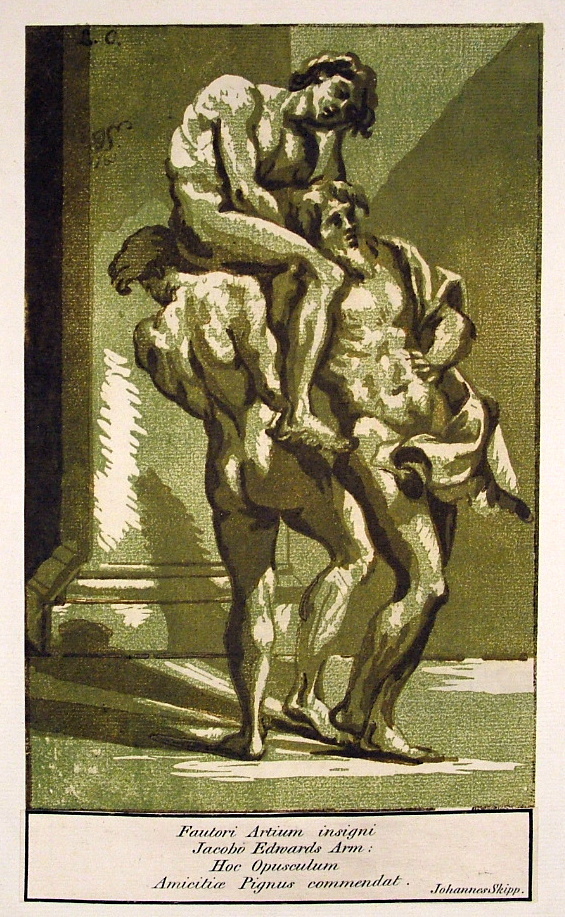A Naked Man Carried on the Shoulders of Two Others, after Guercino

John Skippe (1742-1811), A Naked Man Carried on the Shoulders of Two Others, after Guercino (?), chiaroscuro woodcut, 1781. [upper left: L.C./JS/1781]. In good condition, trimmed just at or within the printed borderline, affixed to a laid folio sheet, on laid paper, 10 x 5 3/4 inches.
A fine impression, printed in four blocks (olive green, light green, brown, dark brown).
Naked Man bears a dedication on a separate sheet below the print to James Edwards. Edwards was a bookseller and bibliographer whose family firm sold many valuable libraries, including the library of the famed chiaroscuro printmaker Antonio Maria Zanetti (1680-1757).
Provenance: ex Collection Mr. and Mrs. Percy Simmons.
Exhibited: Beyond Black and White: Chiaroscuro Prints from Indiana Collections, Indiana University Art Museum (1989); Indianapolis Museum of Art (1990). Number 51 in the catalogue of the exhibition.
Naked Man is attributed by Skippe to a drawing by Guercino in his collection, but he also includes the initials (upper left) L.C., which presumably is a reference to Ludovico Carracci, who Skippe may have thought originated the composition. The meaning of the composition itself is not clear; it is certainly a complex aesthetic study, reminiscent of Michaelangelo’s nudes on the ceiling of the Sistine Chapel.
Skippe was a “gentleman antiquarian” who traveled widely, collecting drawings which he later used as the basis for his chiaroscuro woodcuts. His intent was to replicate the Italian manner of Ugo da Carpi, and perhaps even encourage a re-birth of chiaroscuro woodcut printing. His prints were a great success, but the re-birth of the medium was not forthcoming. Skippe was not focused on the commercial possibilities of the medium, sharing his prints only with appreciative connoisseurs and colleagues. He created a number of folios of prints; the number is unknown but they are rare, and were of varying sizes. In the United States there are two folios at the Yale Center for British Art (one of 31 prints, the other containing 20); another folio of 42 is at the Cincinnati Museum of Art, and finally a folio of 28 is at the University of Chicago.